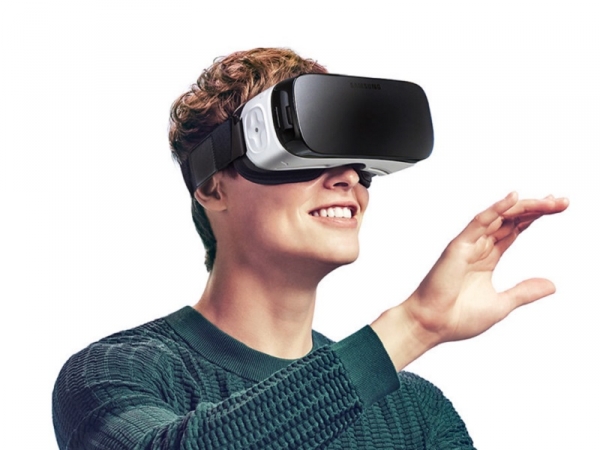
the future of VR and graphic design
VR or virtual reality is the use of computer technology to created a simulated environment.
Unlike traditional user interfaces, VR places the user inside an experience instead of viewing a screen in front of them. Users are immersed and able to interact with 3D worlds. A person using virtual reality equipment is able to “look around” the artificial world, and with high quality VR move around in it and interact with virtual features or items.

The effect is commonly created by VR headsets consisting of head-mounted goggles with a screen in front of the eyes, but can also through specially designed places with multiple large screens.
While devices generally take the same form, how they project imaging in front of our eyes varies greatly. The likes of the HTC Vive and Oculus Rift provide PC-based operations, though major players such as Google and Samsung offer more affordable, smartphone-based headsets. Once your headset and power source are secured, some kind of input is also required for you to connect – whether this is through head tracking, controllers, hand tracking, voice, on-device buttons or trackpads.
Total immersion is what everyone making a VR headset, game or app is aiming towards – making the virtual reality experience so real that we forget the computer, headgear and accessories and act exactly as we would in the real world.
But what’s the point? Are these augmented reality devices solely target to video gamers and role play junkies? Where else might these augmented realities be found? how about on the next bus stop ad or billboard you see? Maybe the next ad you flip to in your favourite magazine will literally pop out at you! But how will this augmented art be viewable outside of a pair of VR goggles? By simply holding your phone like you regularly would, and using an app like EyeJack.
EyeJack App is an augmented reality app and platform that specializes in the curation and distribution of augmented art. By using the app like you would your camera’s phone, users can pan over pieces of art that then triggers a hidden GIF or animation to appear. The app is being widely accepted and already being integrated into marketing initiatives such as music festival stage graphics, where majority of the audience will have their phones out.
Other integrations of the EyeJack App can be found in unique art instalments like the House of VR in Toronto, bringing digital life to visual art. Participants simply open the EyeJack app on their mobile devices and flow through the exhibit like any regular instalment only every piece now has a discoverable interactive element.
And as more big brands integrate this interactive medium into their campaigns, it wouldn’t be a surprise to see a similar technology to that of the EyeJack App become standard on all mobile devices.
So keep an eye out for an increase in augmented advertising as this techy-trend will be suddenly appearing all over the place.
-Denver Dewar, RGD is an Associate Partner at 50 Carleton specializing in print production and website development, Denver has a combined expertise and passion for digital and physical products with an aim to create effective pieces of design and creative communications.
